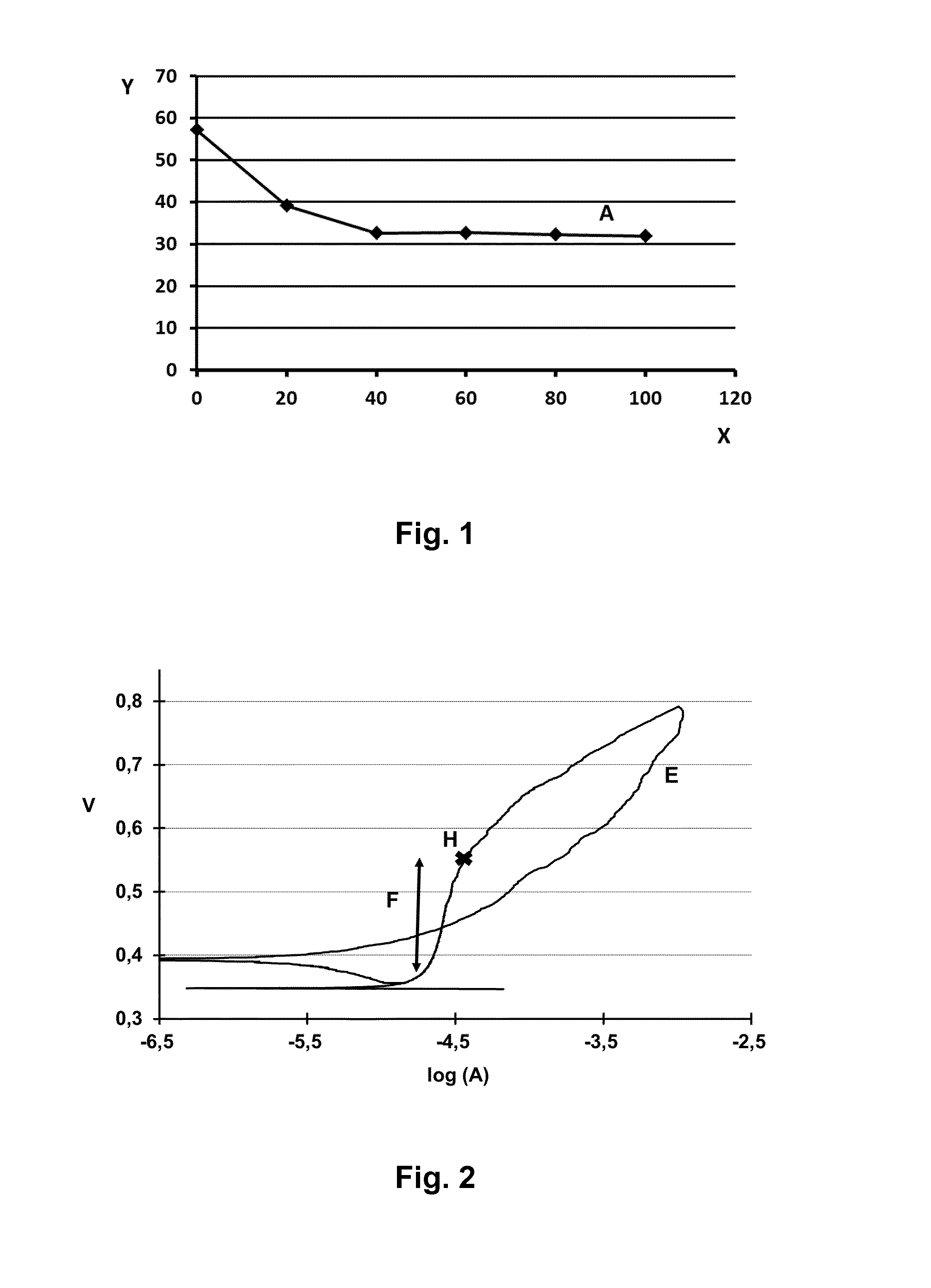Heat resistant separation fabric
a technology of heat resistance and fabric, applied in the field of heat resistance separation fabrics, can solve the problems of frequent change of tooling coverings, and achieve the effect of improving the quality of glass products
- Summary
- Abstract
- Description
- Claims
- Application Information
AI Technical Summary
Benefits of technology
Problems solved by technology
Method used
Image
Examples
Embodiment Construction
[0044]A first example of a heat resistant separation material according to the invention is a weft knitted mould covering fabric consisting out of stainless steel fibers of diameter 12 μm out of stainless steel alloy 316L, spun into yarns of Nm 11 / 2. The fabric has a specific weight of 950 g / m2.
[0045]A second example of a heat resistant separation material according to the invention is a circular weft knitted tubular sleeve of diameter 60 mm (in unstretched state) consisting out of stainless steel fibers of diameter 12 μm out of stainless steel alloy 347, spun into yarns of Nm 11 / 2. The sleeve has a specific weight of 136 g / m2.
[0046]The fabrics according to the invention were treated in an aqueous solution of 30% by volume of nitric acid during a time period of one hour at a temperature of 50° C. Afterwards, the fabric was neutralized, rinsed and dried.
[0047]FIG. 1 shows the percentage of atomic Cr over the sum of the atomic percentages of Cr and Fe over the depth from the surface o...
PUM
| Property | Measurement | Unit |
|---|---|---|
| breakdown potential | aaaaa | aaaaa |
| diameter | aaaaa | aaaaa |
| diameter | aaaaa | aaaaa |
Abstract
Description
Claims
Application Information
 Login to View More
Login to View More - R&D
- Intellectual Property
- Life Sciences
- Materials
- Tech Scout
- Unparalleled Data Quality
- Higher Quality Content
- 60% Fewer Hallucinations
Browse by: Latest US Patents, China's latest patents, Technical Efficacy Thesaurus, Application Domain, Technology Topic, Popular Technical Reports.
© 2025 PatSnap. All rights reserved.Legal|Privacy policy|Modern Slavery Act Transparency Statement|Sitemap|About US| Contact US: help@patsnap.com

